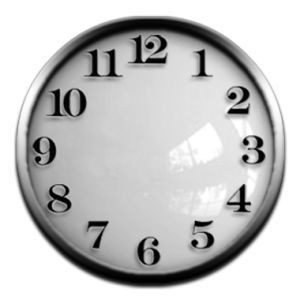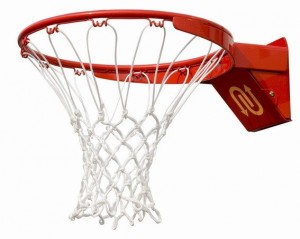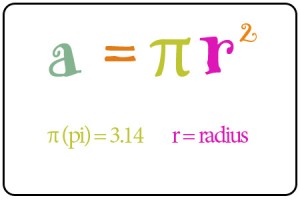They’re mysterious. They’re ominous. They’re elusive. Those circles are impossible to track down. Ok, well maybe not really. Circles are actually all over the place. Almost everywhere you turn you can find a circle. Take a look at the clock. It’s a circle. A basketball hoop? Circle. Traffic Lights? Circles. The home button on an iPad, iPhone, or iPod. Again, a circle. They’re everywhere. And every single one of those circles has it’s own radius, diameter, circumference, and area.
We had just started to learn previously about radius, diameter, and circumference. Now, this week, we also learned how to find the area of a circle!
To find the area of a cirlce, the first thing you need to do is find your radius. Then, you’re going to square your radius. That means if your radius is 3 inches, you’ll do 3 x 3. Finally, you’ll multiply that by pi which is about 3.14. 3 x 3 is 9 and 9 x 3.14 is 28.26. So the area of a circle with a radius of 3 inches would be 28.26 inches squared (don’t forget to write squared just like any other time you find the area).
In order to help us practice finding the radius, diameter, circumference, and area, we had our Circle Hunt. The way it worked was that we had 6 circles located in various places around the school. Students worked in groups of 3 and each group had one of the iPods that were donated to us on Donors Choose. On every piece of paper was a different sized circle and a QR code. A QR code is essentially a barcode that can display a website, dial a phone number, or display text. In the case of our circle hunt, when each QR code was scanned with an iPod, it displayed a clue to where the next circle was located.
Each student had a worksheet that they brought around with them so they could fill out the information about each circle. They began at circle 1, finding the radius. Once they measured the radius, they scanned the QR code which gave the message, “The curtains have drawn and it’s time for a show. It’s now off to circle number 2 you must go.” Students then went and found circle 2 on stage in our auditorium. They continued on until they had located all the circles and had measured the radius of each. Once complete, the group returned back to the classroom to then figure out the diameter, circumference, and area based upon the size of the radius!
Based upon the work done in class, everyone’s understanding all the parts of a circle quite well. Based upon the slideshow below, it looked like everyone had a wonderful time!
What are some other things in math you may use a formula for?
Can you name the formulas for how to find radius, diameter, circumference, and area?





Nice blog post. I never actually realized that there are circles everywhere you look. I use a formula for math for the area of a triangle, rectangle, and a parallelogram.
Sincerely,
Robby
Visit my blog http://blogs.goaj.org/robby2012hamman/
Dear Robby,
Thanks for the comment! We just finished going over the area of a triangle. Now we are finding the area of triangles! I think it is easy because its just half of a square 🙂 Maybe next we will be finding the are of parallelograms. Have a great day!
Sincerely,
Alyxandra
Dear Robby,
Thank you for commenting on the class blog! You can find circles every where you go. What’s your favorite circles? Mine are, my glasses, my watch, and the home button on my phone. What is the formula you use to
find the area? I know the formula you use to find the circumference of a circle. That’s easy, it’s PI!
~Sam 😀
Dear Mr.Hawes,
Hello!:) Where are you from? It was very interesting to learn things you guys learn in math in your area! Our school is actually very small compared to others around here. We have about 230 students in our whole school(K-6)! How many students are in your school? Can’t wait to hear back & thank you for commenting!
Sincerely,
Alyxandra
Dear Mr.Avery,
The Circle Hunt was such a great idea, it was so fun when we had to search around the whole school to find all the circles. I also though it was cool that we used the i pods, so we could find clues by scaning the bar code. I hope we do something like this, another time before this great sixth great year comes to an end.
Dear Morgan,
I had a lot of fun doing the circle hunt to! I did something like this, but I used my aunts phone to scan things around her house! It was really fun!
~Sam 😀
I love this idea and what a great way to get the students engaged. I bet everyone knows how to find the radius, area and circumference of a circle. Can I ask how did you create the QR codes as I would love to do this activity with my class.
Mrs Booth
Dear Mrs. Booth,
We all know how to find the radius, area and circumference! At first it was hard to remember how to do it, but after a little while, it became second nature! I have no idea how Mr. Avery made the QR codes! But I think Mr. Avery is just magical like that.
~Sam 😀
Dear Mrs. Booth,
Hello! I agree that it was a very good idea to teach all of us radius, area, and circumference! It was also a lot of fun 🙂 To make the QR codes we used an app. There are many different ones but we used Redline. I would love to hear back to know if your class does or enjoys the activity! 😀 Thanks for the feedback!
Sincerely,
Alyxandra
Thanks for your quick replies Sam and Alyxandra we are going to have a circle hunt on Thursday. My class is in year 5 and I am also going to have them locate the four planets (that are currently above us in our southern sky)plus the sun and moon using the Sky Walk app to find the radius of each. It should be fun…but you never know…wish me luck..lol
Mrs Booth
We don’t do a lot of work on this area of maths before the age of 11/12. It’s interesting to see what children in different countries are taught. Pi is an old number, or perhaps an old idea. Archimedes understood pi before the birth of Christ! It was through computers that we created the finest version of pi…to 5 trillion digits!
Your school looks so big and new, it’s very different from ours.
I wonder what the three most important circles are for you?
One of mine would be the circle that I cook on.
Another the symbolism of my wedding ring.
Best wishes
Mr E
Hawes
Hi Mr. Eldridge,
The project is REALLY fun! What is your school like? My most important circles in my life is clocks, pans, and the most important my eyes! 😆 Have a nice day!
A student blogger,
Tessa at http://tessatime.edublogs.org/
Dear David,
Hello!:) Where are you from? It was very interesting to learn things you guys learn in math in your area! Our school is actually very small compared to others around here. We have about 230 students in our whole school(K-6)! How many students are in your school? Can’t wait to hear back & thank you for commenting!
Sincerely,
Alyxandra